CDC- Interim Guidance about Ebola Virus Infection for U.S. Citizens Living Abroad
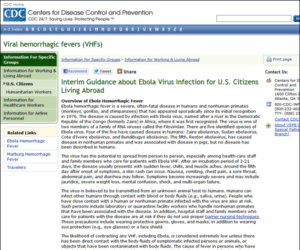 Viral hemorrhagic fevers overview; CDC recommendations; what to do if you think you have been infected; what to do after you return.
Viral hemorrhagic fevers overview; CDC recommendations; what to do if you think you have been infected; what to do after you return.
 Viral hemorrhagic fevers overview; CDC recommendations; what to do if you think you have been infected; what to do after you return.
Viral hemorrhagic fevers overview; CDC recommendations; what to do if you think you have been infected; what to do after you return.
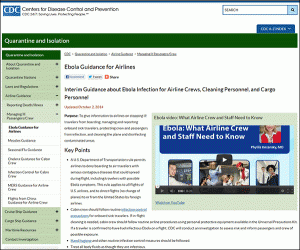 Information for airline crews and cleaning and cargo personnel on protecting passengers and crews from Ebola, as well as cleaning and disinfecting the plane.
Information for airline crews and cleaning and cargo personnel on protecting passengers and crews from Ebola, as well as cleaning and disinfecting the plane.
 Information for airlines, their pilots and cabin crew on reporting deaths and illnesses to the CDC.
Information for airlines, their pilots and cabin crew on reporting deaths and illnesses to the CDC.
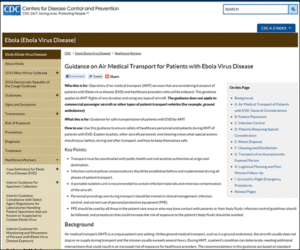 From the CDC, guidance for air medical transport operators who are considering transporting patients with Ebola and the healthcare workers who will also be onboard.
From the CDC, guidance for air medical transport operators who are considering transporting patients with Ebola and the healthcare workers who will also be onboard.
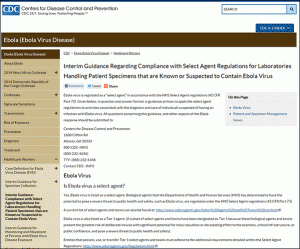 Interim guidance regarding compliance with select agent regulations for laboratories handling patient specimens that are known or suspected to contain Ebola virus.
Interim guidance regarding compliance with select agent regulations for laboratories handling patient specimens that are known or suspected to contain Ebola virus.
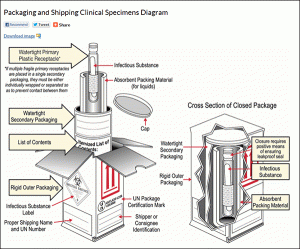 Diagram from the CDC on how to package and ship a clinical specimen.
Diagram from the CDC on how to package and ship a clinical specimen.
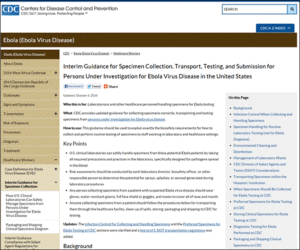 Interim information regarding collection, transport, testing and submission of specimen for patients with suspected infection of Ebola.
Interim information regarding collection, transport, testing and submission of specimen for patients with suspected infection of Ebola.

The Ebola Communication Network was originally developed by the Health Communication Capacity Collaborative (Cooperative Agreement #AID-OAA-A-12-00058) and expanded under Breakthrough ACTION (Cooperative Agreement #AID-OAA-A-17-00017) both under the leadership of Johns Hopkins Center for Communication Programs. This website is now maintained by Johns Hopkins Center for Communication Programs and its contents are the sole responsibility of CCP. The contents of this website do not necessarily reflect the views of USAID, the United States Government, or Johns Hopkins University.
